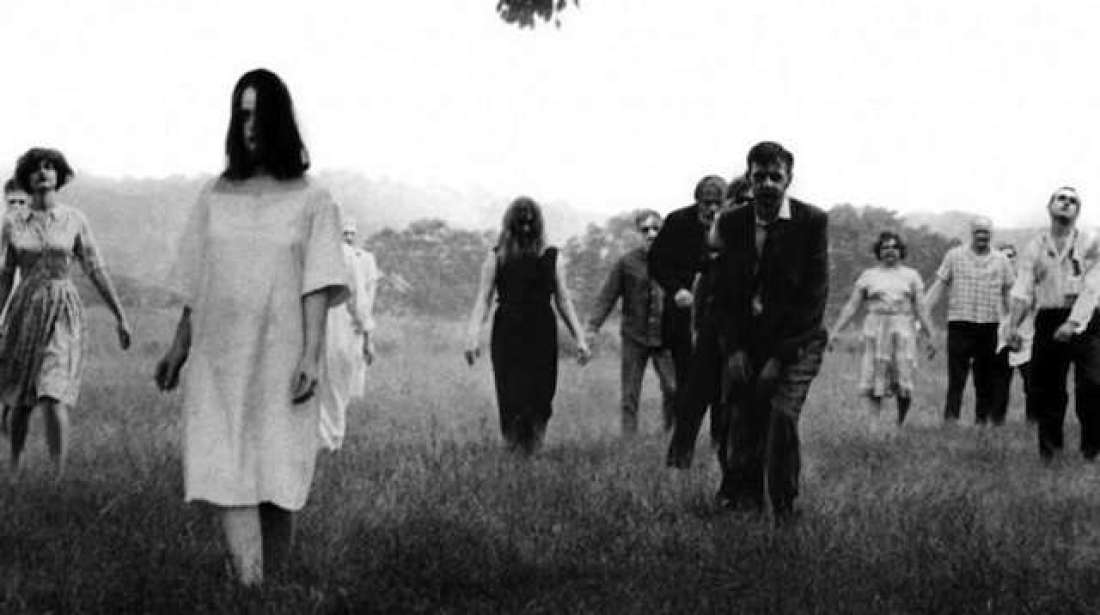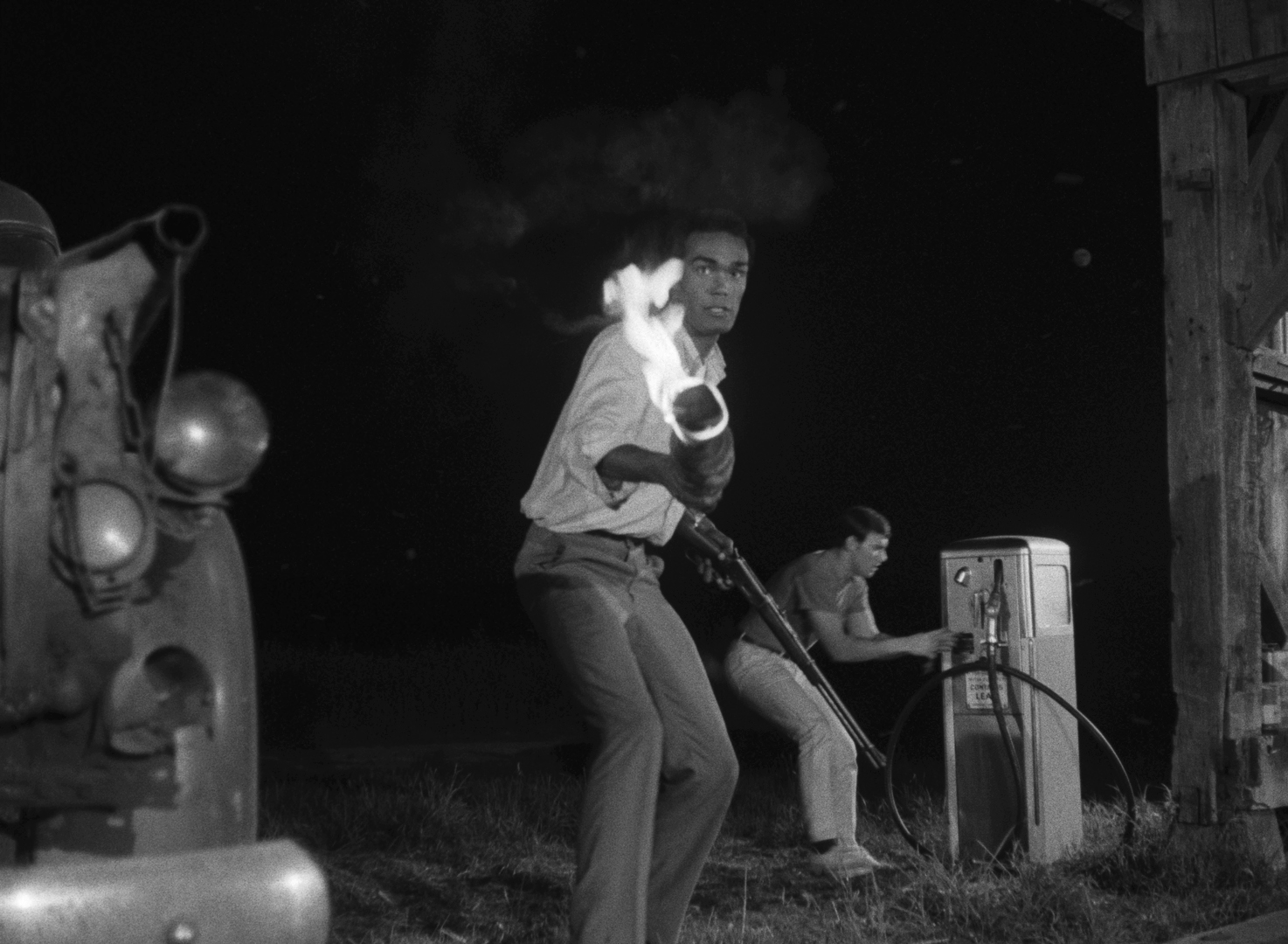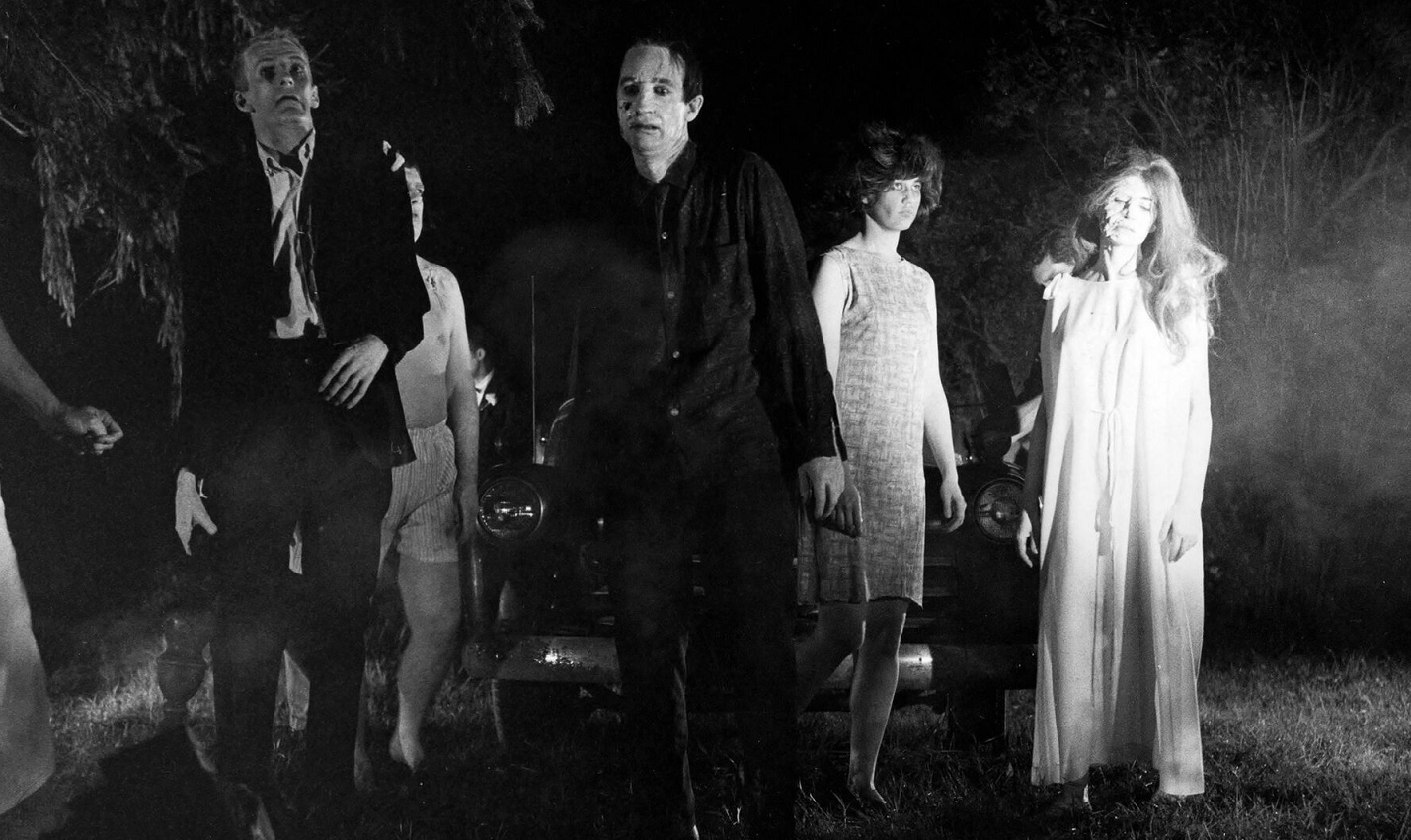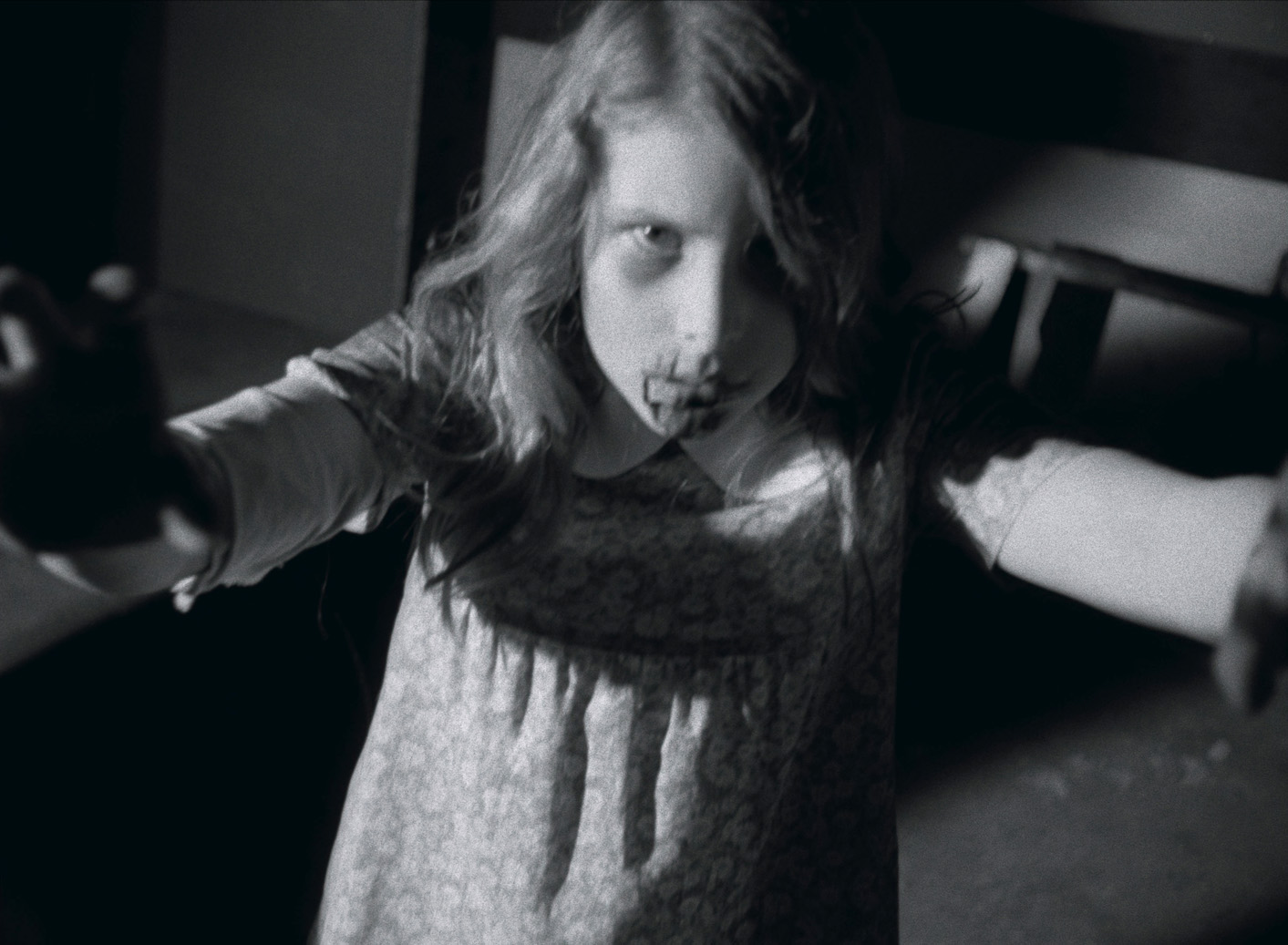Writing and Making Night Of The Living Dead
With the groundbreaking horror Night Of The Living Dead out now courtesy of Criterion, we caught up with its co-writer, John Russo...
In late 1967, a small group of Pittsburgh filmmakers armed themselves with their 35mm cameras, a script and a few props, and changed cinema forever. Night Of The Living Dead, shot for a shade over $100,000, would go on to become a cult classic – the patient zero for a string of zombie movies, from director George A Romero’s sequels (Dawn Of The Dead and so forth) to things clearly inspired by it, like 28 Days Later and The Walking Dead.
Given just how meagre the resources were behind the scenes, it’s not only remarkable just how great the resulting movie was – a tense siege horror where ghouls are constantly pressing their way into a remote farmhouse – but also how enduring it would become. Late last month, Criterion added Night Of The Living Dead to its hand-picked selection, with a restored Blu-ray release which includes new commentaries, archival interviews and other special features. That this plucky little film from Pittsburgh is now rubbing shoulders with the likes of Truffaut’s The 400 Blows or Kubrick’s Barry Lyndon says a lot about its enduring power.
It was a pleasure, then, to get the opportunity to talk to John Russo: the co-writer who did so much to bring Night Of The Living Dead stumbling out of its grave. To mark the UK release of Criterion’s edition of Night Of The Living Dead, Russo explains how the movie evolved from he and Romero’s early ideas, and what it was like to play several characters in the same picture…
I love that this film’s getting a Criterion release. Is it strange to still be talking about Night Of The Living Dead after 50 years?
Well it isn’t strange, Ryan, to me and Russ [Russell Streiner, co-producer], because we’ve been with it every step of the way – from before it was made and all the way through the next 50 years. So nothing surprises us! We’ve been through every development, every thievery, every rip-off, every contract negotiation, every remake and sequel – you name it, Russ and I are the trustees of the company that made the movie, which is Image Ten Inc. We’ve been the trustees for all these years, and we’ve been deeply involved with every step.
Going right back to the beginning, Night Of The Living Dead was such a bold film for its time. Do you remember what the writing process was like?
Oh, of course. George Romero and I were the two writers in our group, so we just started talking ideas back and forth, trying to come up with something. So I had a typewriter in my editing room, and he had a typewriter in his editing room, and I said, “George, whatever we do, I want to start it in a cemetery”. Because people find cemeteries scary – even Abbott And Costello Meet Frankenstein had a cemetery scene, and it was funny and scary at the same time.
So our goal was to just make the best horror movie we could, and give horror fans their money’s worth. Because we had gone to all the movies, and most of them were these old trite plots about attack of the giant crab monster and attack of the giant praying mantis. They all had something to do with mutations due to radiation back then.
We just wanted to make the best movie we could make. So George went off over a weekend around Christmas 1967, and came back with about 20 or 30 pages of a story. It was, in a way, the beginning of Night Of The Living Dead: he had this girl being chased through a cemetery and into a farmhouse. I read this thing, and I said, “This is good. It has all the right twists and turns, the right suspense, but who’s chasing this girl? You never say.”
He said, “I don’t know.”
So I was reading it, and I had the impression that they could be dead people. He said, “Well, that’s good.”
I said, “What are they after? They don’t bite, they don’t claw. Why are they chasing her?” He said again, “I don’t know.”
So I suggested my flesh-eating idea. The reason I said that was because I was working on an idea where aliens have come to Earth in search of human flesh, but they kill people and they let the bodies rot. This kid’s running, and he steps through a pane of glass in the ground, and under this pane of glass is a rotting corpse. Well, I was writing it in such a way that you didn’t need to see the aliens come to Earth in their saucer or whatever, because we couldn’t afford it, but that was going to be the discovery that somebody’s killing people and rotting their bodies – just like in medieval times in England, you know, they’d shoot a goose and leave it hanging up for several days to rot a little bit. And then they ate it.
So that was my idea. But George got tied up, and I just took over the script writing. I rewrote his part and put it in the screenplay, then wrote the second half myself after we’d thrown around a few ideas. But most of the ideas in that second part came from me because George was kind of out of the picture at that point.
When I got it done – and I did all of this in about three weeks – I gave it to George, and he said, “Let’s get it off to Rudy’s place and grill some steaks”. He’s one of our associates. So we were out there, and George was reading the script while the steaks were being grilled, and he said there was something wrong with it. I said, what? Then Rudy read it, he said, “There’s nothing wrong with it.”

George thought for a couple of minutes and said, “I know what’s missing. We need one more siege.” What he meant was, he wanted to insert an attempt by the zombies where they almost get into the house about three-quarters of the way through the movie, but they fail. And then the final siege is where they finally overrun the house. So we did that – we didn’t write it, we just did it while we were shooting. That’s how it came together.
There were things we changed during filming without necessarily writing anything. Somebody, and it wasn’t me, said, “Maybe the brother [Johnny, played by Russell Streiner] should come back and drag Barbra out of the house.” We carefully considered that, because the idea was originally, his head was bashed against a tombstone, and he was dead. We didn’t want to blow it; we didn’t want people to say, “Wait a minute – he’s dead, isn’t he?” We debated whether people would buy it, that only part of his brain had been smashed and he could still come back. Well, they did buy it, and it became an iconic moment in the movie.
Also, in my original script, the kid in the basement was a boy named Timmy. And Karl Hardman [producer, also plays Harry Cooper] said, “My daughter can play that part”, so we just changed the name to Karen and shot it the same way it was written.
The idea of killing Ben by mistake was, I said, “You know, Pennsylvania is a big deer hunting state, and every year three or four hundred thousand deer are slaughtered. Wouldn’t it be ironic if our hero, Ben, was shot by accident?” So we did that. The way that draft was written – which was the only draft that exists – Ben gets shot, and the sheriff [played by George Kosana] and the deputy work their way into the house and down to the basement, and Barbra is in the basement. She and Ben had both made it to the basement; they’re about to shoot her when a tear rolls down her cheek, which tells them she’s human. So in the last scene, Barbra’s in a raincoat, the sheriff’s trying to get her to take some coffee, and then in the background you see Ben’s body being carried out to the bonfire.
It’s not a bad ending, but we didn’t do it that way. We had him dragged out of the house by [the sheriff].
I read another interview you did, and you mentioned Invasion Of The Body Snatchers. That you were a big fan of that film; I have to say it’s one of my favourite films ever. I wondered if that inspired you, because it showed that you could do something quite sophisticated in a B-movie?
Yep. Not in a story sense, but… I was on a break from college, and I saw the movie on a marquee: Invasion Of The Body Snatchers. With not much else to do that night, I just went in not knowing what I was going to see. That was the 10 o’clock show. Well, the people coming out of the 8 o’clock show had these absolutely stunned looks on their faces, and I thought, “What the hell am I gonna see in there?” And the movie was stunning. Spooky and everything else.
So I kept saying, if we could make a movie that caused people to come out of the theatre with that same stunned look on their faces, then we’d really have something. That was our goal, really: to scare people, to give horror fans their money’s worth for a change, using the limited means that we had. I think any artist should always do that: you need to have the people in mind, and give them what they’re gonna like. We apparently succeeded in that!

Had you seen The Birds? Was that an influence?
Ah yeah, but that was later. I think it was later. I didn’t really care for it that much – I didn’t think it was all that scary. But we went to all the Hitchcock films. Certainly, Psycho I’d seen, around 1961, when it first came out. That was truly a scary film, but I didn’t have that in mind at all. Our flesh eating ghouls weren’t exactly the same kind of character! But another film that had an effect on me, though it wasn’t a horror film, was Forbidden Planet.
Oh yeah! What a great film.
That was another film that showed me that something really good could be done in the horror or sci-fi genre. It did have the monsters from the Id, which I thought was a great idea, and well done. Just a very good, and philosophical idea really, you know? Monsters from our own minds. So those two films were… I never believe in copying, I try to keep my stuff original, but as far as pointing the way towards something, I always give credit to those two films.
Was the script that you wrote as grisly as the final film? For its time, it was a pretty gory, graphic film.
Yeah, uhhh… but again, everything we did was carefully reasoned out. Whether I did it in my writing or George did it, or we did it as a group, as we conceptualised how we were going to film certain things. Nowadays, zombies have become almost supernatural – they do things that couldn’t really be done. They couldn’t push their hands into somebody’s torso and pull out hearts and intestines, right? But what we did, if you think about it… you don’t see anything being eaten until 80 percent of the way through the movie. You get a hint of it, because of the partially-eaten skull at the top of the stairs. The only time that they’re capable – we made the point that they’re dead and they’re weak, that their strength is in numbers – so we figured, if the truck explodes and two young people are killed, blown apart and roasted in the flames, then these undead creatures could devour them. We never wanted people to question the logic of what we were doing.
But you didn’t attempt to censor yourselves.
We certainly didn’t flinch from showing it. I don’t remember how graphic I was in the script, I’d have to look at it again. But one of our shareholders owned a packing company – a meat packing company – so he brought the livers and hearts and all that stuff to the location. It was a surprise, because a lot of our commercial clients had what we thought was a stick up their ass – very straight up-and-down, straight-laced – ended up being ghouls and chomping into those hearts and lungs! [Laughs]

Amazing. When you were writing, did you and George talk about what having a black lead might mean politically at that time?
No. It was just that Betty Allen, who was George’s girlfriend at the time, knew that Duane Jones was coming back for Easter to visit his parents – they lived right across the river from Pittsburgh. Duane was teaching at Columbia University, so she said, “We ought to have Duane read for the part.” He did, and we unanimously thought he was the best actor for the part. Not too many read; one of them was our associate producer, who was a pretty good actor, but even he agreed that Dwayne should get the part. That was it. We didn’t make any overt racial statement or anything like that; we didn’t change anything.
Would you say that some of the more political readings of the film were read into it later by critics?
I think that if you make something that feels real, people will read into it. There was one British writer for Sight & Sound who said you could hear strains of Old Black Joe on the soundtrack when there’s no such thing. The sheriff isn’t really a redneck – though he could be a redneck or not. He’s just a guy out doing a job. If the dead came back to life and started chomping on the living, someone would have to go out and gun them down, so that’s what he’s doing!
What are your memories of the shoot itself? Because you actually played two characters in the film, didn’t you?
Yeah. Boy, you’ve done your homework! A lot of people don’t know that. But yeah, I did the ghoul that gets the tire iron in the head, and I did the Molotov cocktail stunt, and then I was the driver in the Washington DC scene. You know, we were so short-handed that everybody had to do everything, but I was the only one who volunteered to be set on fire! Although we did put a little lighter fluid on [Bill] Hinzman’s jacket [an actor who played one of the ghouls]. When the torch hits Hinzman, during the escape attempt, that’s just a little bit of lighter fluid.
What I did was real gasoline. Three takes, three different angles – they’re in the movie.
My god. Weren’t you nervous?
I’ve pretty much been a daredevil my whole life. I’m sitting here with Chuck Corby, one of my actors, and he grew up in a tough town just like I did. You had to fight, you had to have balls, or you’d get picked on. We grew up doing daredevil, crazy-ass things, and it’s lucky I didn’t get killed. A lot of people did. I had friends drown and everything else.

I was reading that Roger Ebert was in a matinee, and for some reason a bunch of kids had gone in because it didn’t have a rating. I think they thought it was some cheesy film, and they were really taken aback…
Oh yeah, we didn’t make it for kids. The distributor put it out one month before the ratings system took place, so it wasn’t our fault. But we delighted in the publicity, because we got into Reader’s Digest with 10 million circulation.
What do you think of the legacy of Night Of The Living Dead? The impact that it had, culturally?
We were absolutely sure we were making a good movie, and we were solidly behind George as a director. But nobody could predict the phenomenon that it’s become. But I have proof that I believed it was a good movie, because in the first interview that I ever did was with [a local newspaper]. They interviewed me and Duane, and they called me a brash young man for saying it was such a good movie. I always tell people I’m a brash older man now! [Laughs]
And you’ve made another zombie movie now, is that right?
My Uncle John Is A Zombie – I play the lead. I came up with the character. Chuck plays a zombie hunter that kidnaps me. He wants to charge the hunters big bucks, because I’m famous as the only walking, talking zombie! [Chuckles] It’s a lot of fun, and audiences have been getting a big kick out of it. It’s in some festivals. I sing two songs in the movie as a zombie. George Kosana is also in the movie; Russ plays a crazy preacher that thinks the dead still need to be spiked, so he’s trying to drive a spike into my head. George Kosana is the sheriff, and it’s his last movie because he died after we filmed. But after all these years, he gets indicted for shooting Ben on purpose; a girl accuses him, and says, “How come there were more white zombies than black ones, and you only shot black ones?” [Laughs] So that’s what we’re doing right now: promoting it, doing some final edits.
Well, all the best with it! John Russo, thanks very much for your time.
Night Of The Living Dead is out on Blu-ray now through The Criterion Collection.